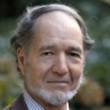Global catastrophes and trends : the next fifty years
(Book)
363.34 SMIL
1 available
Copies
| Location | Call Number | Status |
|---|---|---|
| Central - Adult Nonfiction | 363.34 SMIL | Available |
Description
A wide-ranging, interdisciplinary look at global changes that may occur over the next fifty years—whether sudden and cataclysmic world-changing events or gradually unfolding trends.
Fundamental change occurs most often in one of two ways: as a “fatal discontinuity,” a sudden catastrophic event that is potentially world changing, or as a persistent, gradual trend. Global catastrophes include volcanic eruptions, viral pandemics, wars, and large-scale terrorist attacks; trends are demographic, environmental, economic, and political shifts that unfold over time. In this provocative book, scientist Vaclav Smil takes a wide-ranging, interdisciplinary look at the catastrophes and trends the next fifty years may bring.
Smil first looks at rare but cataclysmic events, both natural and human-produced, then at trends of global importance, including the transition from fossil fuels to other energy sources and growing economic and social inequality. He also considers environmental change—in some ways an amalgam of sudden discontinuities and gradual change—and assesses the often misunderstood complexities of global warming.
Global Catastrophes and Trends does not come down on the side of either doom-and-gloom scenarios or techno-euphoria. Instead, Smil argues that understanding change will help us reverse negative trends and minimize the risk of catastrophe.
More Details
Notes
Similar Titles From NoveList
Published Reviews
Choice Review
Smil (Univ. of Manitoba) has produced an inspiring, daunting analysis of a range of probable global catastrophes that require critical assessment and considered, worldwide response. This is a probability account of "fatal discontinuities" and trends to 2050. Catastrophes reviewed include collision with extraterrestrial objects, volcanic mega eruptions and collapses, influenza pandemics, and violent conflicts and terrorist attacks. Equally challenging trends include energy transitions and environmental change. These are discussed in the context of a new world order: decline of major economies (Japan, Europe, Russia, US), evolution of the Muslim world, and the rise of China and India. A final chapter deals with risk and "uncertainty"--quantifying the odds and rational attitudes. Smil deplores grand forecasts and deliberate support for euphoric or catastrophic views of the future. Instead, he presents eclectic inquiries and long-term historic perspectives, emphasizing our limited understanding and inherent uncertainties. The text is presented in brilliantly clear English and draws on the author's amazing erudition and breadth of knowledge. The citations alone are astounding. Global Catastrophes and Trends is a vital antidote to current widespread media exaggeration, and is worthy of the widest possible readership. Summing Up: Essential. All collections. J. D. Ives emeritus, Carleton University
Reviews from GoodReads
Citations
Smil, V. (2012). Global catastrophes and trends: the next fifty years . MIT Press.
Chicago / Turabian - Author Date Citation, 17th Edition (style guide)Smil, Vaclav. 2012. Global Catastrophes and Trends: The Next Fifty Years. Cambridge, Mass.: MIT Press.
Chicago / Turabian - Humanities (Notes and Bibliography) Citation, 17th Edition (style guide)Smil, Vaclav. Global Catastrophes and Trends: The Next Fifty Years Cambridge, Mass.: MIT Press, 2012.
Harvard Citation (style guide)Smil, V. (2012). Global catastrophes and trends: the next fifty years. Cambridge, Mass.: MIT Press.
MLA Citation, 9th Edition (style guide)Smil, Vaclav. Global Catastrophes and Trends: The Next Fifty Years MIT Press, 2012.


































